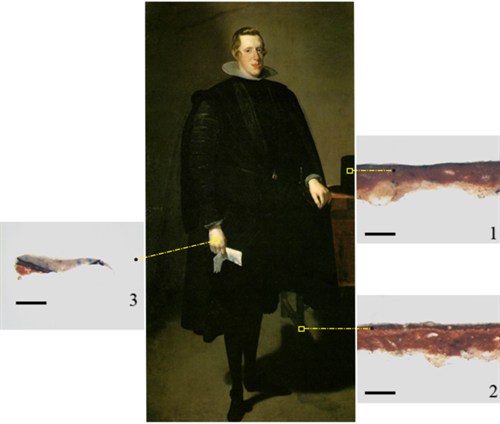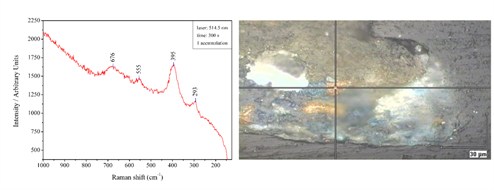Carolina Gutiérrez-Neira, The pigments on Diego Velázquez paintings
Diego Rodríguez de Silva y Velázquez (Seville 1599-Madrid 1660) is one of the greatest painters of all times. His life and artistic production are extensively documented. He began his career as an artist in Seville when in 1618 he was accepted as a professional painter, thus starting what is known as the first period of the artist. The second period begins in 1621 when he moved to Madrid where he obtained a position as a civil servant at the court of King Philip IV. In 1629, following Rubens’ advice, he visited Italy, where he stayed for more than one year (third period). He returned to Madrid at the beginning of 1631 and a few years later he visited Italy for a second time (1649-1651), commissioned by King Philip IV of Spain to collect pieces of art for the decoration of some rooms of the Royal Alcazar of Madrid, the royal residence.

Fig. 1. The painting Philip IV (Felipe IV) by Velázquez (1623). Prado Museum, Madrid, Spain. Reflected light microphotograph of the cross section analyzed. (1) Black of the hat on the bluish grey of the bottom. (2) Light brown of the leg of the table. (3) Flesh colour of the right hand on the costume. Scale bar length is 250 µm.
Regarding the analytical study, Raman spectroscopy is a versatile, rapid, simple to use, non-destructive and non-invasive technique used routinely in archaeometry for the identification of pigments in historical objects such as manuscripts, paintings, ceramics, papyri and more. The technique was used successfully in the identification of azurite, hematite, carbon black, vermilion, white lead, calcium carbonate and goethite pigments on Diego Velazquez paints.

Fig. 2. Micro-Raman spectrum of yellow pigment on the black mantle of King Baltasar in Adoration of the Magi (Adoración de los Magos) painting, identified as goethite. At the right side a micrograph showing the exact location where this compound was found.
The analytical evidences demonstrated that Diego Velázquez employed the same set of pigments throughout the course of his career and that the artist’s palette was limited to a reduced set of pigments, which the artist blended to reproduce the entire chromatic spectrum and then he applied them with simplicity showing his mastery of pictorial technique. This is what made Velázquez an exceptional artist – he was able to “paint a lot with little”.
The set of pigments used by Velázquez seems to be similar to those employed by other European artists during the 17th century. However, Velázquez used fewer pigments than other painters of the epoch; for example, green pigments as verdigris or malachite were used by Murillo, Zurbarán, Caravaggio or Coello, while Velázquez employed a mixture of azurite and yellow pigments. Artists of the time differ also because of their pictorial technique; for instance, Tiziano’s paints exhibit various thin layers and an extensive number of pigments to produce a certain colour while Velázquez’s painting is characterized by its simplicity.
More information:
Gutiérrez-Neira et al. “Identification of pigments in Diego Velázquez paintings by Raman microscopy,” Vibrat. Spec. 69, 13-20 (2013).
